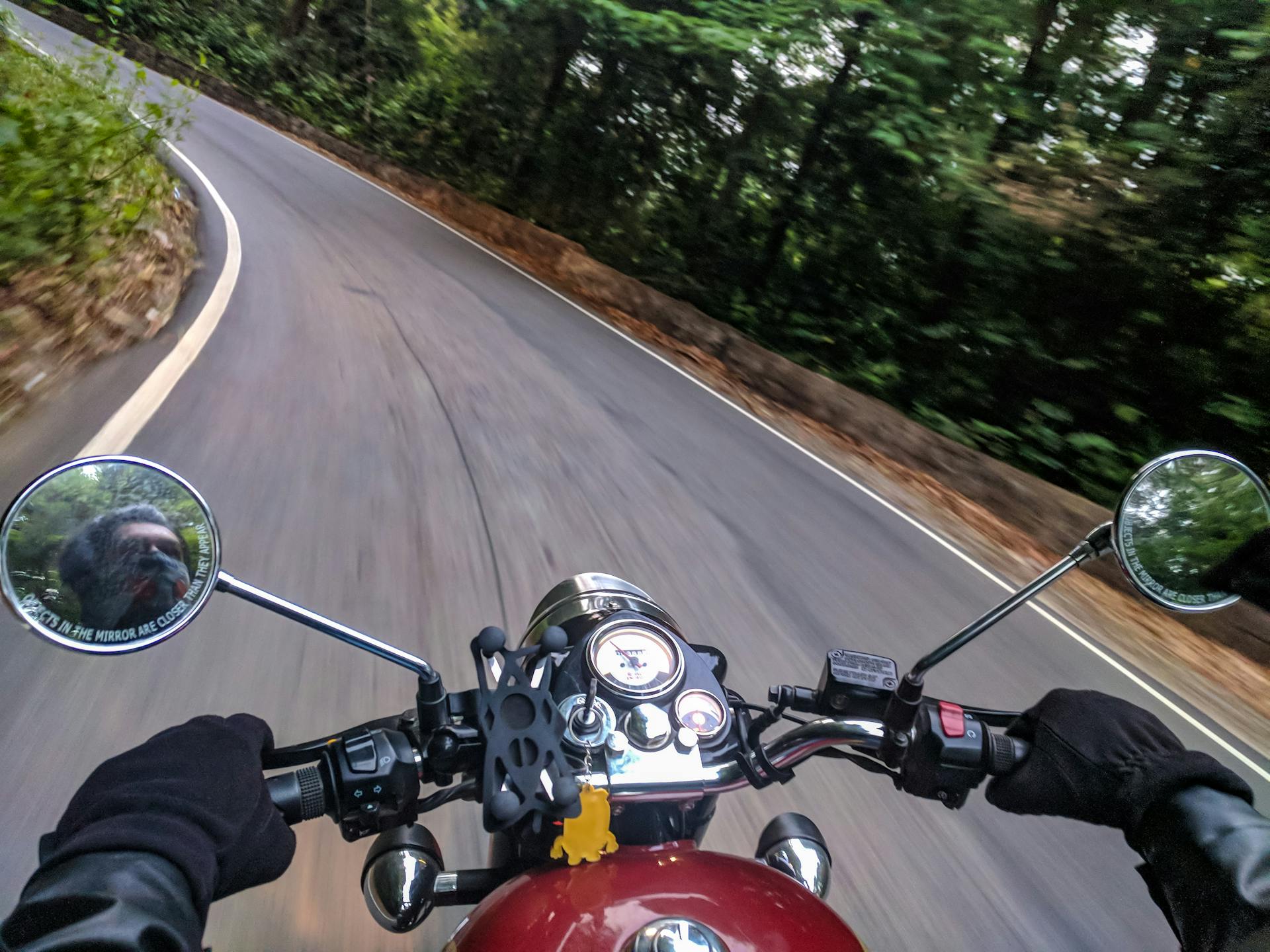Motorcycle Category A ‘show me, tell me’
vehicle and passenger safety questions
About the questions
You’ll be asked 2 vehicle safety questions. These are also known as the ‘show me, tell me’ questions.
The examiner will ask you a ‘show me’ question, where you’ll have to show them how you’d carry out a vehicle safety check.
You’ll also be asked a ‘tell me’ question, where you’ll have to explain to the examiner how you’d carry out the check.
You will be asked 1 question in relation to Pillion (passenger) safety, or effects on handling or adjustments to the vehicle when carrying a passenger or load.
The questions
SHOW ME- How you would check that the horn is working on this machine (off road only)?
-Use control and sound horn briefly ( turn ignition on if necessary)
SHOW ME- How you would check that the brake lights are working?
Operate front and rear brake levers, checking function of brake light with hand, or reflection from a surface ( door, windows etc. ) or ask for assistance.
SHOW ME- How you would check the steering movement before using this machine?
Move the handlebars, showing free, smooth movement from left to right full lock. No notchy movement or play in the motion. No trapping or stretching of any cables during movement.
SHOW ME- How you would check to operation of the front brake on the machine?
Wheel the machine forward and apply the front brake lever, showing effective stopping.
SHOW ME- How you would check the brakes on the machine?
Check both brakes by pulling or pressing ( rear brake) for unusual play or sponginess. Excessive travel indicates poor braking capacity. ( checks made whilst off the machine)
SHOW ME- How you would check the operation of the emergency cut out switch?
Operate switch, without engine being started.
SHOW ME- How you would operate the fog light, and explain when to use it?
Operate switch ( if present) turning on ignition and lights if necessary. Explain use, for when limited visibility of less than 100m from the vehicle in front.
SHOW ME- How to operate the lights from dipped to main bean?
Operate rocker switch from dipped to main beam. Ignition / engine needs to be on, and lights activated.
TELL ME- How you check the engine has sufficient oil?
Identify the sight glass or dipstick. Explain that the machine should be level and engine cool.
The oil level should be between the min and max markings. If a dipstick; explain removing
and wiping to re-dip to gauge level. If a sight glass, explain a clear glass is necessary to view level.
TELL ME- How you would check there is sufficient / safe brake fluid in the reservoirs?
Identify the front and rear brake fluid reservoirs ( handlebar and right side of machine below seat level.) Explain the machine needs to be upright, and to check ensure hydraulic fluid is above the minimum markings.
TELL ME- How you would check the machine lights, and reflectors are clean and working?
Explain a walk around of the machine with lights on to check all bulbs are lit. (including indicators ) and all lenses and reflectors are clean and visible.
TELL ME- How you would check chain condition and tension and how to maintain rear wheel alignment?
Explain the checking of chain and rear sprocket for condition and tension. Looking for distorted links, and rust. The sprocket teeth should not be sharpened or broken. Regular greasing and cleaning to reduce friction and wear. When adjusting the chain, refer to owners handbook for tension tolerance. Use adjustment nuts (Allen key bolt) to the rear of swing arm to equally pull wheel to the rear, tightening chain. Ensure alignment of spindle is true using markers on swing arm.
TELL ME- How you would check the tyres on this machine are safe and legal to use on the public highway.
Explain the minimum tread depth must be at least 1mm ¾ across the breadth of the tyre in a continuous band around the tyre. When checking tyre pressure use a reliable gauge and refer to the owners handbook for correct pressures. A visual inspection of the tyre checking for ; cracked tyre walls, bulges, tears, or objects sticking into the rubber.
Pillion passenger questions.
What advice would you give to a pillion passenger if they have never been on a motorcycle before?
• Ensure appropriate safety equipment is worn, with an approved helmet fastened and worn correctly.
• Make sure climbing onto the machine is done safely (usually from the left) with control, and not unsettling the balance.
• Ensure the pillion is sitting astride, facing forward and both feet on the pegs and holding onto the hand / grab rails provided. (also holding onto the rider is an option)
• Tell them not to fidget or unsettle the balance by moving around or standing / leaning
• Don’t look / lean over shoulder, distracting the rider, or unsettling the balance.
• Keep arms in and don’t offer hand signals to other drivers.
• Ensure your pillion knows to lean with the rider when the machine is in motion.
What adjustments would you make to machine if you were taking a pillion passenger?
• Increase tyre pressures according to the manufacture’s guidance in the owners handbook.
• Adjust suspension ( preload) according to the manufacture’s guidance in the owners handbook.
• Ensure appropriate foot pegs and seat are present and in position.
• Adjust headlights accordingly.
• Adjust mirrors as required.
What affects does the extra weight to the rear of the machine, have on the handling?
• Acceleration – More power when moving off and accelerating may cause the front wheel to become light, therefore creating a vagueness to the steering.
• Deceleration – Stopping distances will increase. Consider your pillion or luggage may travel forward when sudden braking.
• Cornering is affected – A higher centre of gravity requires control ; slow cornering with a lower gear, ensuring counterbalance techniques are used ; lower high speed cornering should be considered with weight to the rear of the machine.
• Slow riding – extra weight higher up on the machine causes negative affect on the stability and balance of the machine.
• Side wind – as a result of a greater surface area (mass) stability is affected in side wide conditions.

